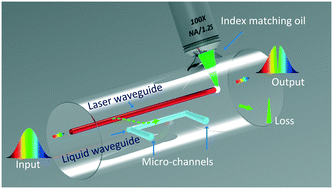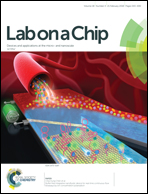Optofluidic gutter oil discrimination based on a hybrid-waveguide coupler in fibre
Abstract
Discriminating edible oils from gutter oils has significance in food safety, as illegal gutter oils cannot meet a variety of criteria such as the acid value, peroxide value and quality. To discriminate these illegal cooking oils, we propose an ultrasensitive optofluidic detection method based on a hybrid-waveguide coupler. Prior to the straight waveguide inscription in the cladding of the silica tube using a femtosecond laser, a section of coreless fibre is firstly spliced with the ST to supply a platform for the inscription of an S-band waveguide. Then a pair of microfluidic channels are ablated on the ST using the fs laser to enable liquid analytes to flow in and out of the air channel. In the transmission spectrum, a unique resonant loss dip can be observed, which is produced by coupling the light from the laser inscribed waveguide to the liquid core when the phase-matching condition is met. This hybrid-waveguide coupler with a simplified structure realizes dynamic optofluidic refractive index sensing with an ultrahigh sensitivity of −112 743 nm RIU−1, a detection limit of 2.08 × 10−5 RIU and a refractive index detection range from 1.4591 to 1.4622. This novel method can be used for food safety detection, specifically, for the discrimination of gutter oils.



 Please wait while we load your content...
Please wait while we load your content...